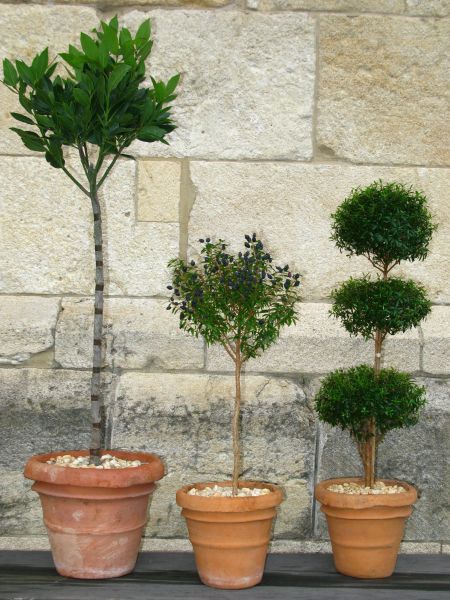Photograph by Barbara Bell.
Pictured, from left to right: bay laurel (Laurus nobilis) trained as a standard; myrtle (Myrtis communis) standard in fruit; myrtle trained as an estrade, a popular late-medieval form.
The Romans, ever practical, especially valued bay laurel and myrtle as topiary subjects because the fragrant clippings could be used for chaplets (Linda Farrar, Ancient Roman Gardens, 1998.)
In addition to bay laurel and myrtle, rosemary, santolina, germander, and other woody herbs continue to be popular subjects for topiary work.
To create a standard, a single strong stem is encouraged, and any side shoots are removed. The foliage that crowns the stem is pinched out to create the head, and the new growth is trimmed to the desired shape. It does take time and attention to create a display-worthy specimen, but it is not all that difficult (Barbara Gallup and Deborah Reich, The Complete Book of Topiary, 1987).

